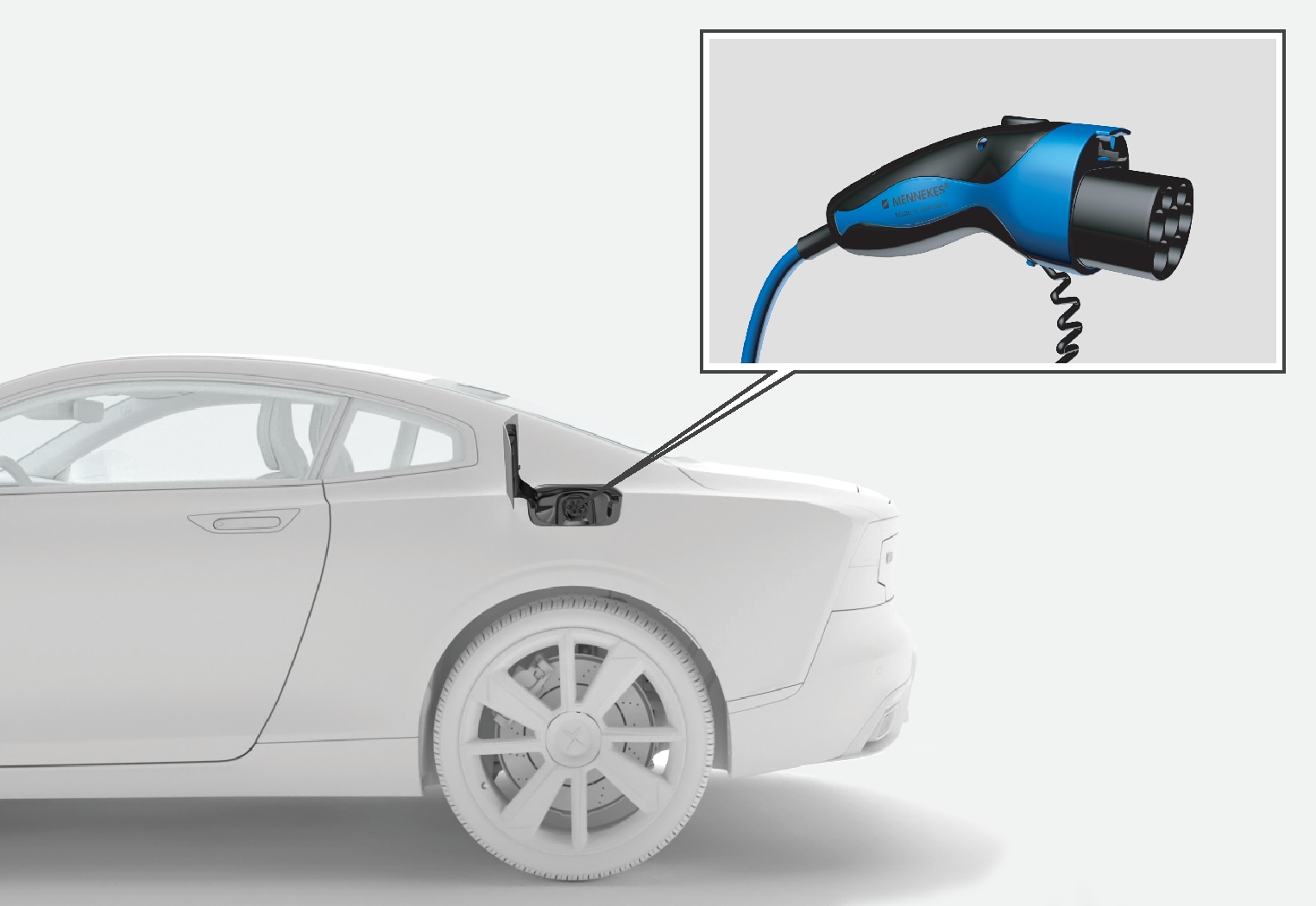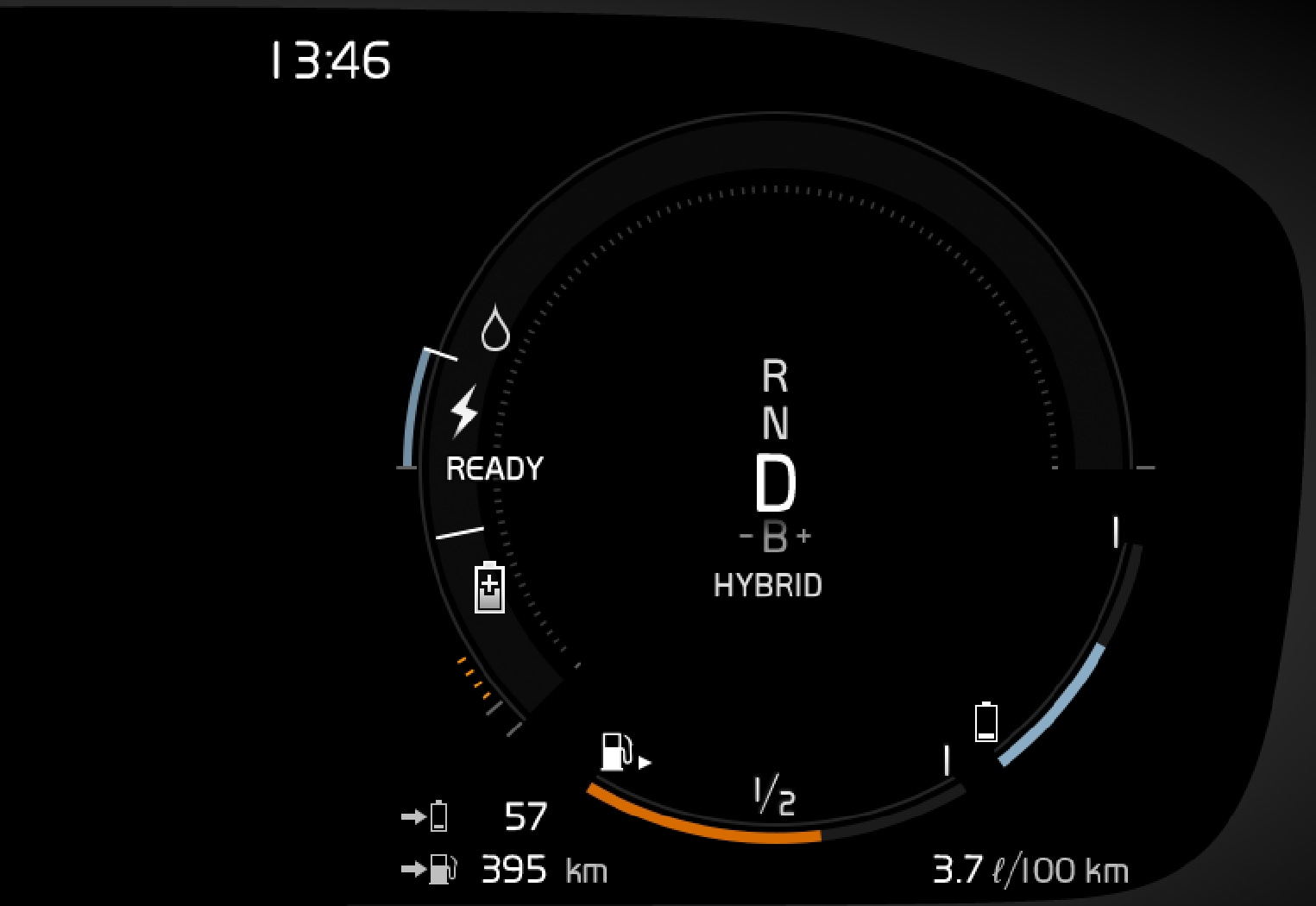Charging the hybrid batteries
The hybrid batteries are charged using a charging cable placed in a storage case attached to the side panel in the boot. The charging case is secured in place by means of a magnetic snap fitting and released by lifting it straight up.
The hybrid batteries can also be charged via charging stations with an integrated control device. The charging stations can be equipped with either a permanent charging cable or a socket where a special charging cable with a matching connector, known as a mode 3 charging cable, can be connected.
Fast charging
Besides charging via a 230 V socket (alternating current), the car supports fast charging with direct current via charging stations that support the CCS (Combined Charging System) standard. A higher charging power can normally be achieved by charging with direct current, and the charging time can therefore be reduced. The maximum charging power is normally achieved when the charge level of the hybrid batteries is 0-80%. When the charge level increases, the power will be reduced in order to reduce wear.
Note
The time it takes for the hybrid batteries to be charged is dependent on the charging power that is used.
Note
Warning

- Indicators on the charging cable's control unit.
- Indicator lamp in the car's charging input socket.
- Illustration and text in the driver display.
The starter battery is charged when the hybrid batteries are charging and terminated when the hybrid batteries are fully charged. It is not possible to drive the car while it is charging.
If the hybrid batteries' temperature is below -10 ºC (14 ºF) or above 40 ºC (104 ºF) then it may mean that some of the car's functions are changed or unavailable because the capacity of the hybrid batteries is reduced outside this temperature range.
Electric operation is not possible if the temperature of the batteries is too low or too high. If drive mode PURE is then selected, the combustion engine starts.
Charging with the petrol engine

The car can also generate power for the hybrid batteries and the batteries are charged.
- The hybrid batteries are recharged during gentle braking with the brake pedal. The car's kinetic energy is then converted to electrical energy, which is used to charge the hybrid batteries.
- In gear position B, the car uses electric motor braking when the accelerator pedal is released, while the hybrid batteries are recharged at the same time.
- The hybrid batteries can also be charged by the car's engine.